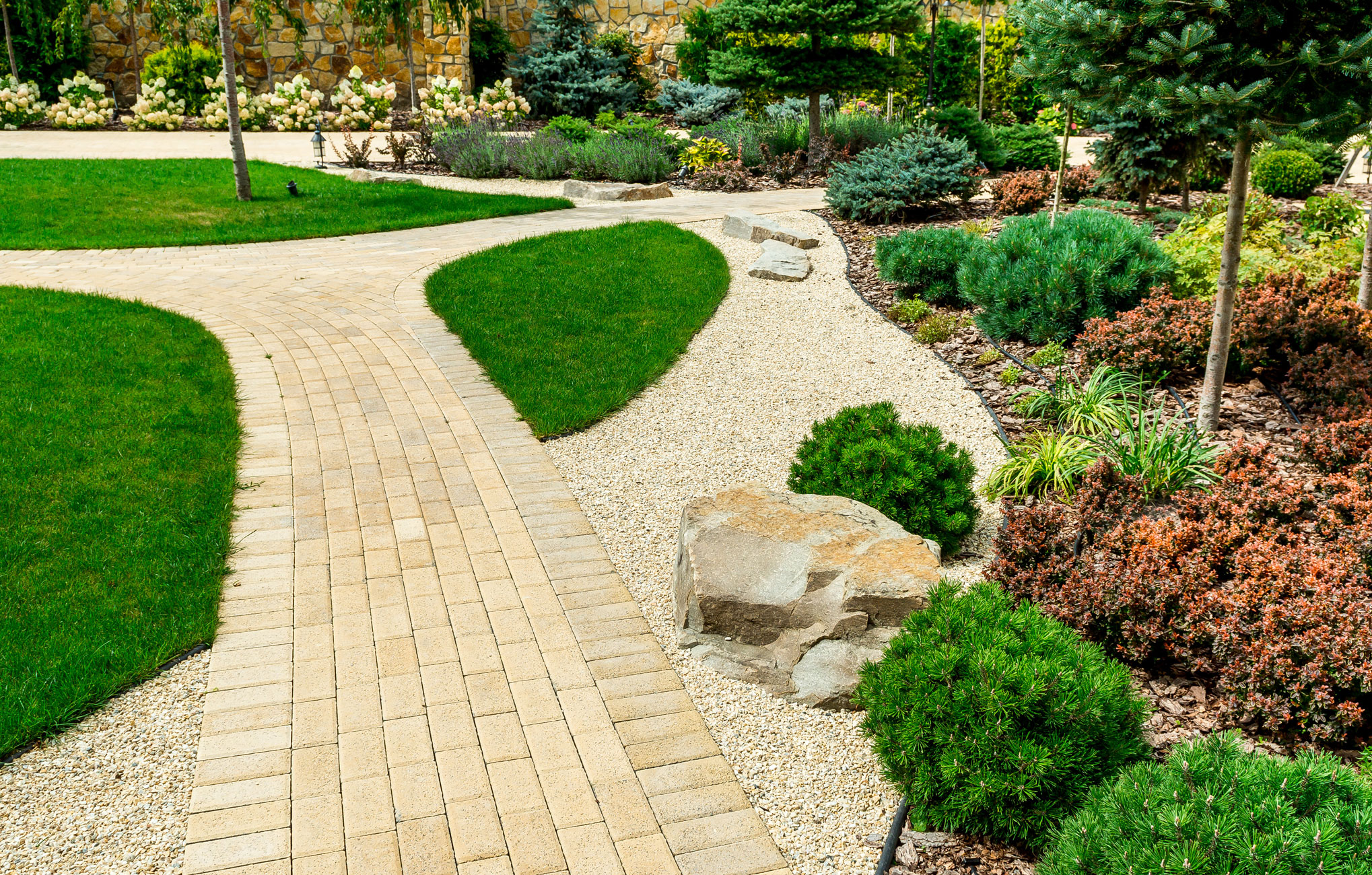In order to have a complete understanding of landscaping, you need to understand what is involved with landscaping and the fact that they include two different features referred to as hardscapes and softscapes. In order to distinguish their differences, you need to recognize that they are completely different. Despite the difference, they are both still needed in order to achieve a well-balanced landscape design.
With a hardscape, it consists of landscaping items that are hard in nature such as stone, brick, or concrete. With softscapes, they consist of living items such as trees and plants.
When you put too much emphasis on one or the other in your landscape design process, you may end up with an unbalanced outcome. Too many flower beds or water features without walkways or an outdoor patio can make a yard look uninviting. On the other hand, too much cement or stone can make a yard look plain and unnatural. When landscape design has more than what is necessary one way or the other, it could undermine a home´s value and appearance. With that said, here are some components of hardscapes and softscapes
Components of a Hardscape
Hardscape is the non-living component of landscape design that provides structure, function, and definition to outdoor spaces. The components of hardscape include elements such as patios, pathways, retaining walls, pergolas, water features, and outdoor lighting. They add durability, texture, and aesthetic appeal to the landscape, and serve practical purposes such as providing drainage, creating outdoor living areas, and enhancing accessibility.
Components of Softscapes
A softscape involves items such as flowerbeds, shrubs, and small trees and other foliage existing in any and all varieties. Softscapes add to the esthetics of the landscape design. A well designed softscape plan will transform your yard into a beautiful oasis and can increase the value of your home.
Think About the Space
As you plan, remember that your lawn needs to be able to have a nice incorporation of both hardscape and softscape items. Take into consideration the space you are working with, and this doesn’t only mean horizontal space. Keep in mind of the verticals as well so that your shrubs and planters have a space to grow. Keep your design plans balanced so you can maximize the potential of the space you are working with.
If you are unsure what you want or how to plan your landscaping design, talk to the experts. We can setup a consultation to go over your space and help you come up with the design plan that fits your needs.

